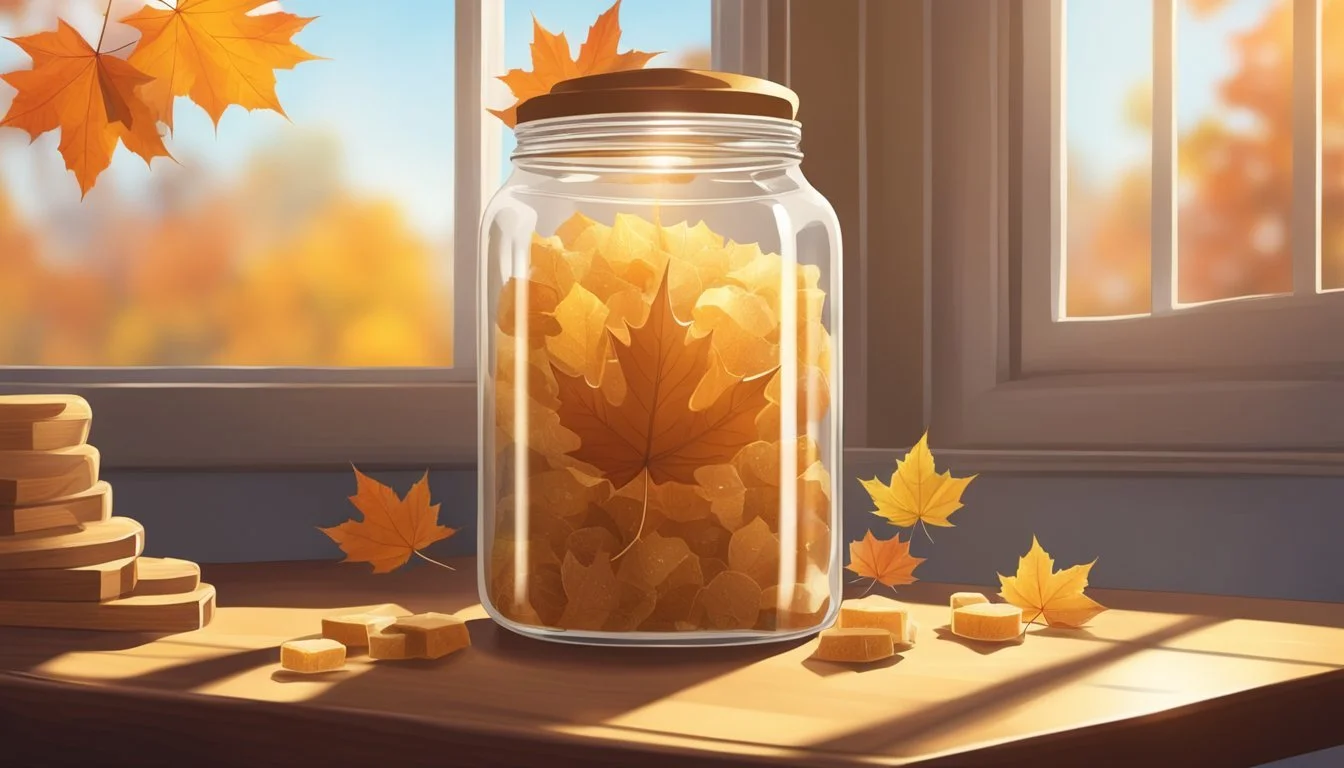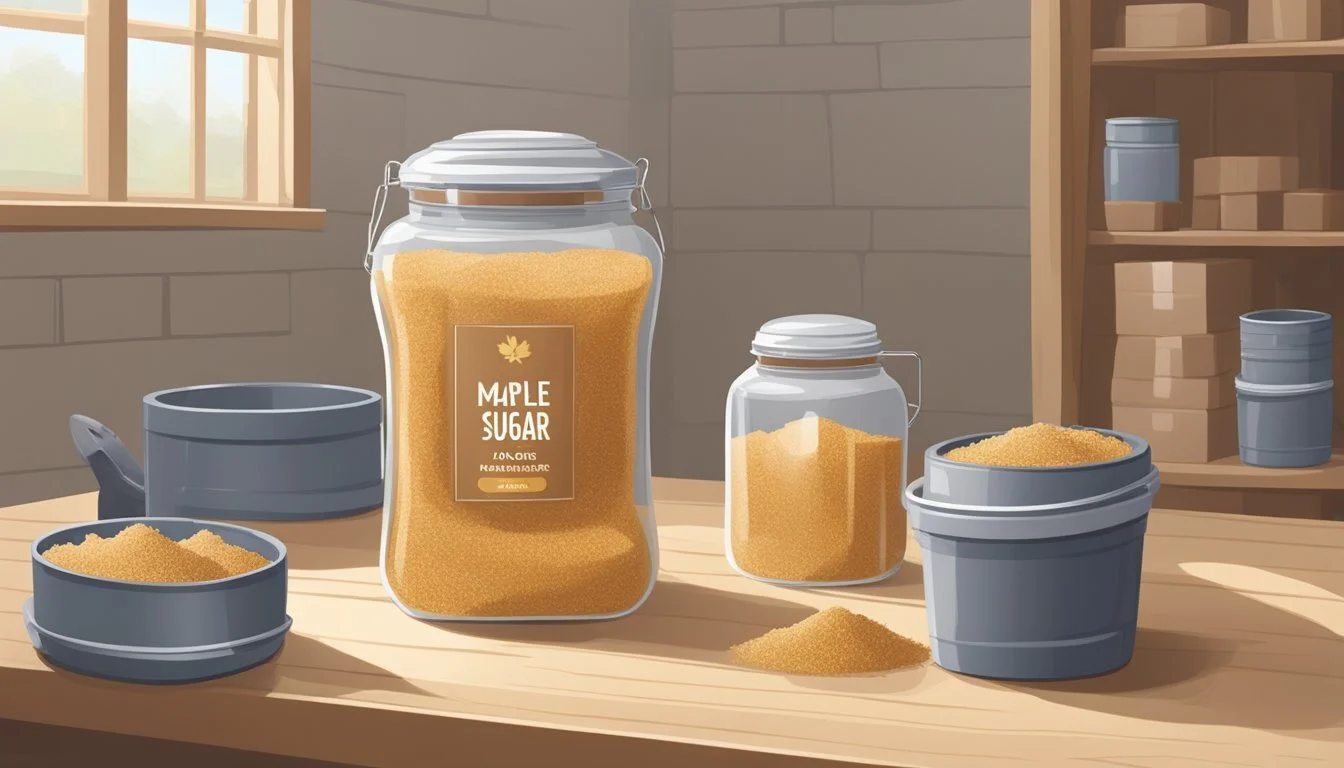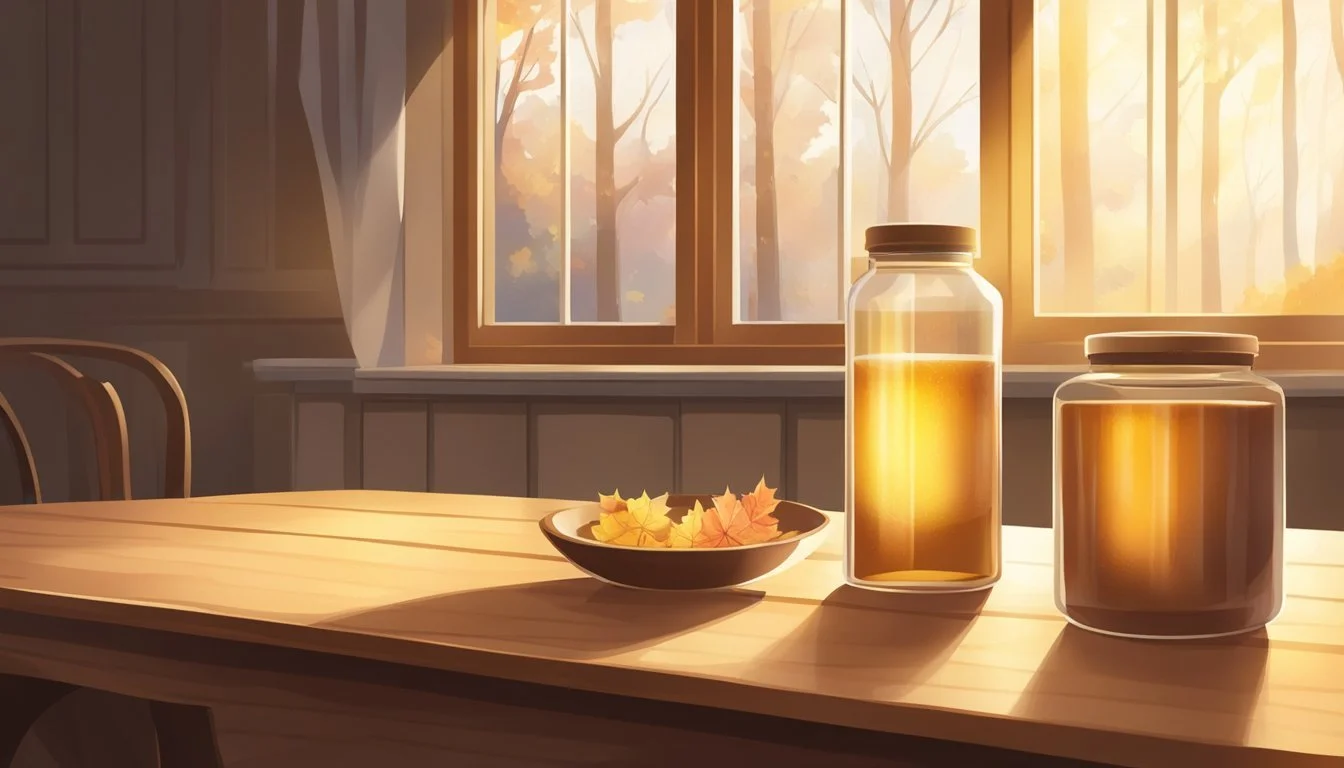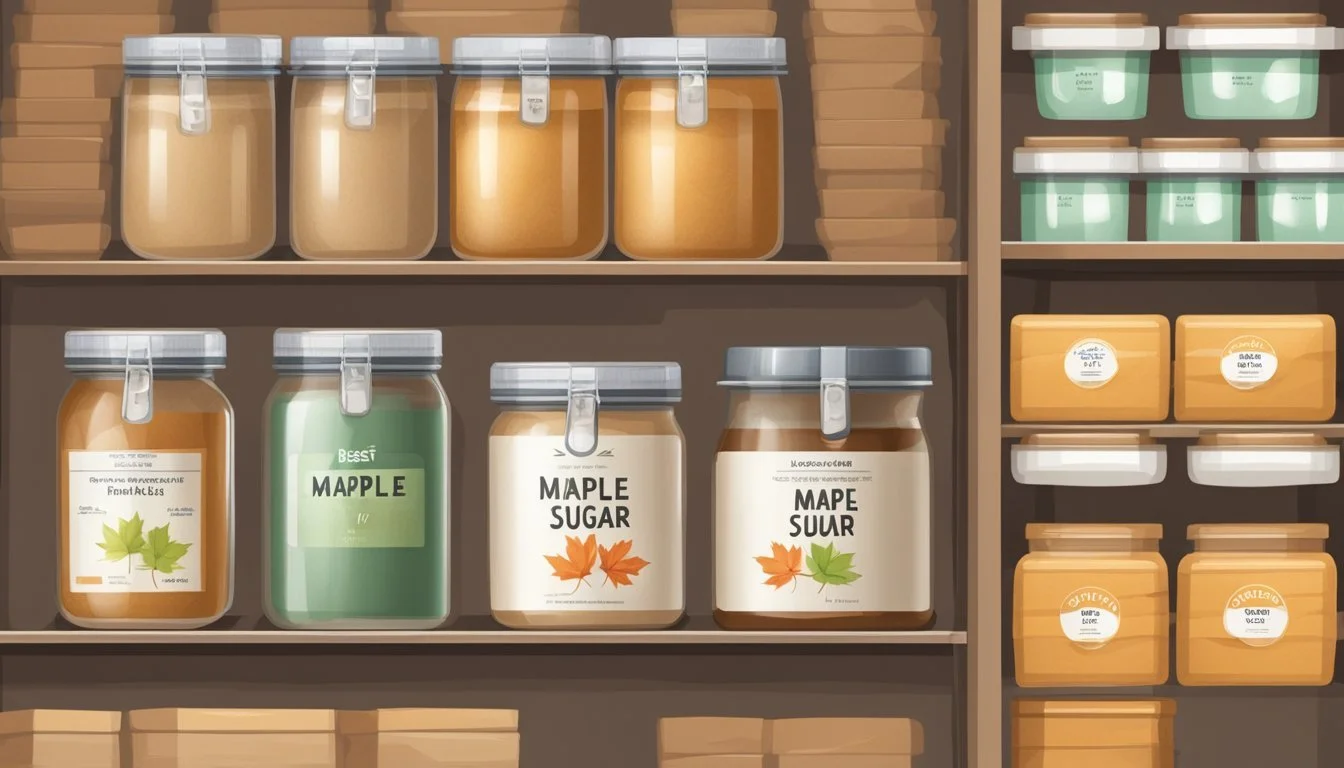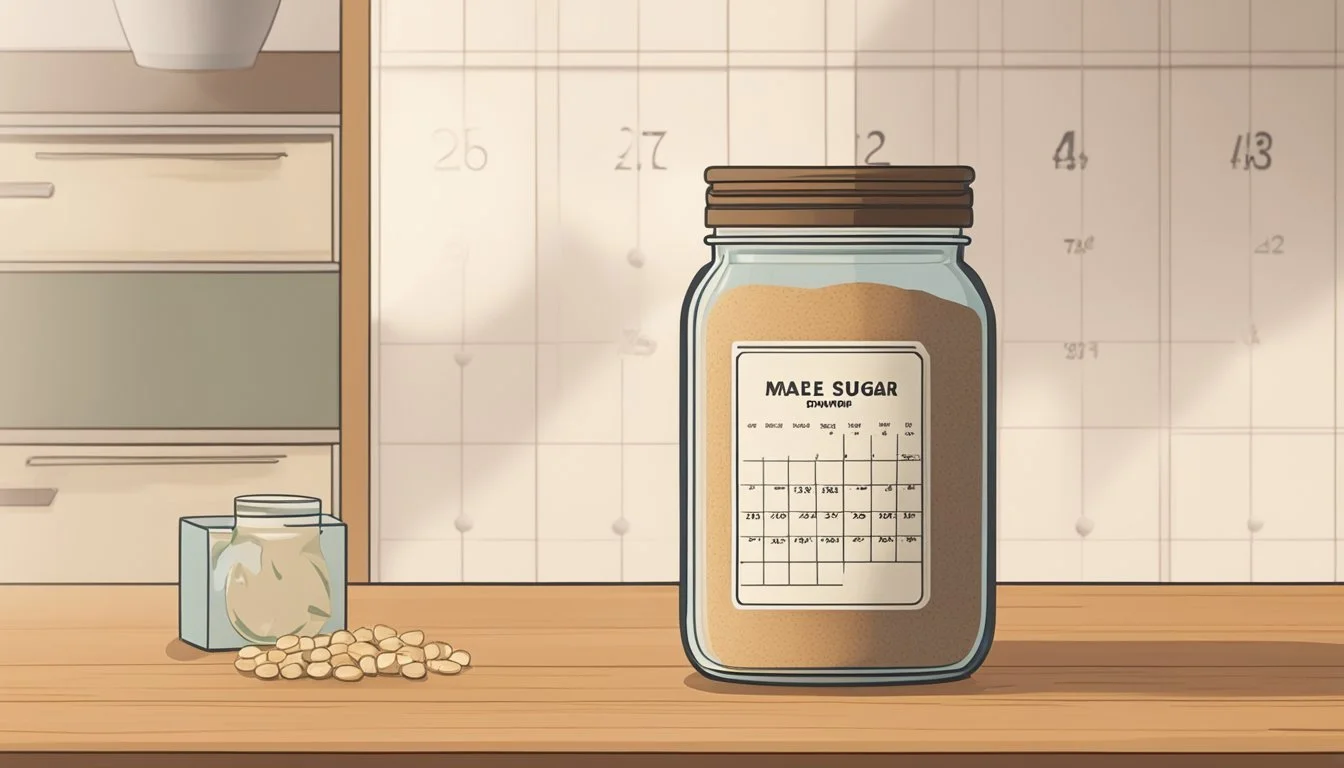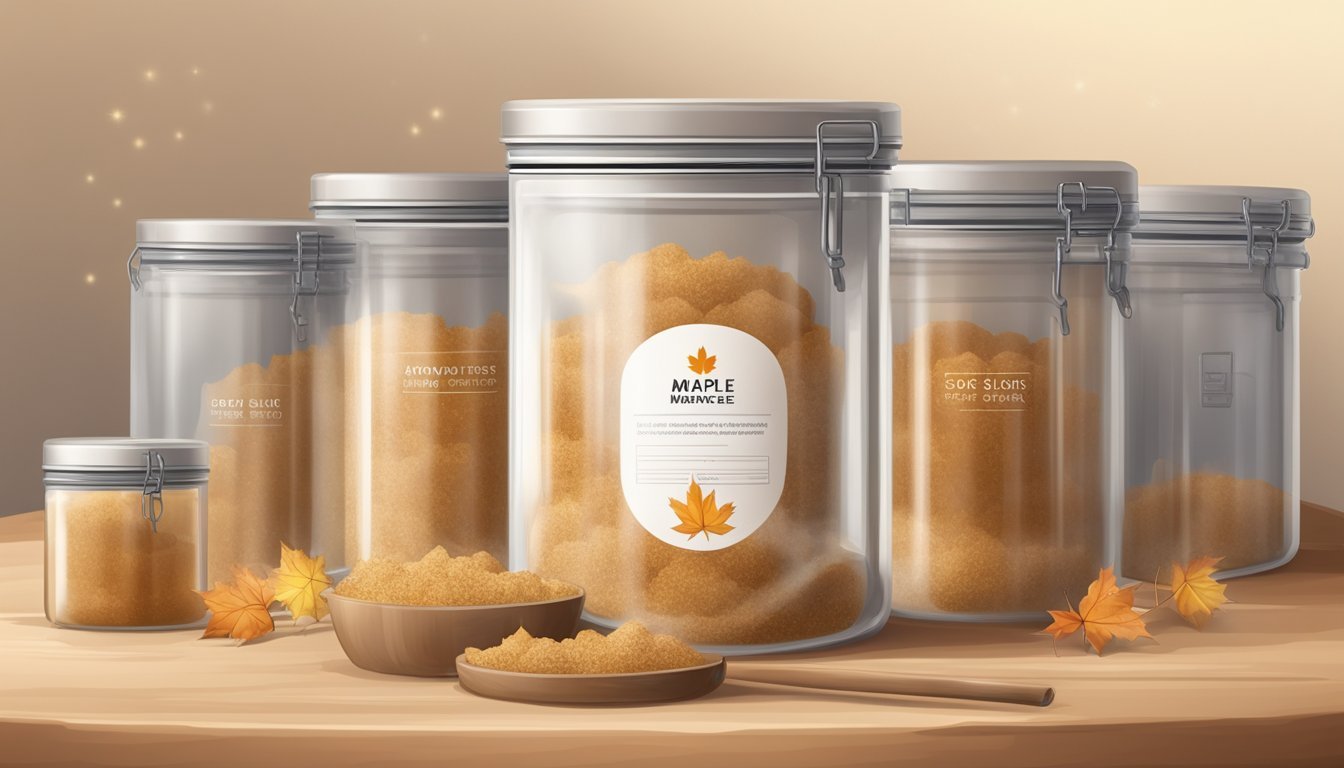How Long Does Maple Sugar Last?
Shelf Life and Storage Tips
Maple syrup, a popular natural sweetener, is renowned for its unique flavor and versatility in the kitchen. Many consumers often purchase it in larger quantities, especially if they have a preference for genuine maple syrup over imitation versions. The shelf life of maple syrup is a common query among users keen to maintain the quality of their syrup for as long as possible. Unopened, maple syrup can generally last up to a year when stored in the pantry, and this lifespan extends to about a year in the refrigerator after the seal is broken.
The longevity of maple syrup can be attributed to its high sugar (how long does sugar last?) content, which serves as a natural preservative, hindering the growth of microorganisms that typically lead to food spoilage. Proper storage is crucial once the syrup is opened; refrigeration is recommended to preserve its quality. In cases where there is an excess that will not be used for an extended period, freezing maple syrup is a feasible option to consider. Frozen, the syrup's shelf life is indefinite, although some crystallization of sugar may occur over time, which does not indicate spoilage but is merely the syrup's sugar content solidifying.
Observing the quality of maple syrup over time is important to ensure it remains safe for consumption. Opened containers can develop mold if not stored correctly, rendering the syrup unusable and necessitating disposal. To maximize the syrup's shelf life and enjoyment, it's essential to understand and follow proper storage techniques.
Maple Sugar Fundamentals
Maple sugar, a granulated form of maple syrup, is a natural sweetener derived from the concentrated sap of maple trees. It offers an alternative to refined sugars with a distinct flavor profile.
Maple Sugar Origin
Maple sugar is produced from the sap of sugar maple trees, which are predominantly found in the northeastern United States and Canada. The sap is collected during the early spring when the trees are tapped. This process involves drilling holes into the tree's trunk and inserting spouts that allow the sap to flow out. The sap, which contains about 2% sugar content, is then boiled to evaporate excess water, leaving behind concentrated maple syrup. Upon further boiling, the syrup crystallizes and can then be stirred to produce granulated maple sugar.
Types of Maple Sugar
Maple sugar comes primarily from two types of maple trees:
Sugar Maple (Acer saccharum): This species is known for its high sugar content and is the traditional source for maple sugar production.
Red Maple (Acer rubrum): While it can also be tapped for syrup, the red maple has a lower sugar concentration compared to the sugar maple.
Maple Tree Type Sugar Content Note Sugar Maple High Preferred for higher yield Red Maple Lower Usable but less efficient
Maple sugar retains the unique taste of maple syrup and serves as a natural sweetener in various culinary applications. It is highly valued for its rich, caramel-like flavor and is used in both sweet and savory dishes.
Initial Storage Conditions
Proper storage conditions are crucial for maximizing the shelf life of unopened maple sugar. It is essential to consider both the type of packaging and the environment in which the maple sugar is stored.
Unopened Maple Sugar
When they store unopened maple sugar, individuals should keep it in a cool, dry place. A pantry or cupboard away from heat sources and sunlight is ideal. This helps to preserve the quality and flavor before the seal is broken.
Ideal environment for unopened maple sugar:
Temperature: Cool
Humidity: Low
Light: Minimal
Sealed Packaging Options
The type of container used to store the maple sugar also affects its shelf life.
Glass Bottles:
Excellent for long-term storage
Provides an impermeable barrier against air and moisture
Plastic Containers:
Should be food grade and tightly sealed
Less durable than glass, but lightweight and typically cost-effective
Tins:
A non-reactive metal option
Should have a tight-fitting lid to prevent the ingress of air
For the longest shelf life, some people opt for vacuum sealing, as this method removes air, preventing oxidation and extending the product's freshness. When using any of these containers, ensuring a tight seal is key to preserving the maple sugar's quality.
Shelf Life Determination
Determining the shelf life of maple sugar is contingent upon several factors ranging from storage conditions to exposure to contaminants. Careful observation is necessary to identify signs of spoilage, ensuring safe consumption.
Factors Affecting Shelf Life
The shelf life of maple sugar can vary, but it generally remains usable for extended periods when stored properly. The primary factors influencing its longevity include:
Storage Environment: Maple sugar should be kept in a cool, dry place away from direct sunlight to prevent degradation.
Container Material: The best storage options are airtight containers made of glass or metal to protect the sugar from moisture and other contaminants.
Humidity: High levels of moisture can introduce water onto the sugar's surface, potentially leading to spoilage.
Temperature Fluctuations: Consistent temperature helps maintain maple sugar's quality, while frequent changes can diminish its shelf life.
Recognizing Spoilage Signs
Maple sugar should be inspected regularly for any signs of spoilage. Signs that maple sugar has gone bad may include:
Odor Changes: A deviation from maple sugar's characteristic sweet smell can indicate spoilage.
Taste Alteration: If the taste of the maple sugar is off or sour, it may have absorbed other flavors or contaminants.
Mold Presence: Occurrences of mold suggest that the sugar has been exposed to mold spores and moisture, making it unsafe to consume. In such instances, immediate discarding is advised.
Optimal Storage Practices
Proper storage of maple syrup is essential for maintaining its quality and extending its shelf life. The following practices offer reliable ways to keep maple syrup at its best, whether for short-term use or long-term preservation.
At Home Storage Solutions
For unopened maple syrup, a pantry or cool cupboard away from direct sunlight serves as an ideal storage place. It remains stable for about one year when stored in this manner. Once opened, maple syrup's shelf life greatly benefits from refrigeration. This method helps to maintain the syrup's flavor and prevents spoilage. The typical refrigerator shelf life of opened maple syrup is also about one year.
Glass containers are the preferred storage vessels, as they preserve the flavor best, followed by plastic and lined tin.
Store-bought maple syrup often contains preservatives that allow it to be kept in the pantry, even after opening, for approximately one year.
Long-term Preservation Methods
For maple syrup that one wishes to keep beyond the standard pantry shelf life, freezing is an effective option. Maple syrup does not freeze solid due to its high sugar content, making it convenient to thaw and use as needed.
Before freezing, ensure the syrup is placed in a freeze-safe container, leaving some room at the top as the syrup may expand.
Other long-term preservation methods, such as canning, involve sterilizing jars and can extend the shelf life indefinitely. However, this method requires strict adherence to safe canning procedures.
Usage Suggestions
When incorporating maple sugar into your culinary repertoire, keep in mind that its unique flavor and sweetness lend themselves well to a variety of dishes. Maple sugar can enhance both sweet and savory recipes, providing a distinct taste that refines the overall flavor profile.
Sweet Applications
Maple sugar acts as a delightful sweetener in breakfast dishes like pancakes and waffles. Its rich taste pairs exceptionally well with the fluffy texture of these breakfast staples, elevating them beyond their ordinary flavor spectrum.
Pancakes: Sprinkle maple sugar on top of pancakes for a caramelized finish.
Waffles: Mix maple sugar into the batter for an infused maple flavor.
Savory Pairings
In savory dishes, chefs often incorporate maple sugar to create a balance of flavors that can transform an ordinary sauce or entree into a remarkable dish.
Sauces: Integrate maple sugar into barbecue or glaze sauces to add a touch of sweetness; this can complement the flavors in savory dishes, such as grilled meats or roasted vegetables.
Savory Dishes: Utilize maple sugar in rubs for a subtle sweetness that counteracts the saltiness of the dish without overpowering the inherent flavors.
Handling Opened Maple Sugar
Once opened, maple sugar's shelf life can vary depending on storage conditions. Maintaining its freshness is key to extending its usability and inherent quality.
How to Extend Usability
To extend the usability of opened pure maple syrup, one should store it in the refrigerator. The cold environment helps prevent the syrup from spoiling prematurely. Consumers must note that the recommended usage period for refrigerated pure maple syrup is roughly one year, as this helps ensure quality and taste. Additionally, it is advisable to store maple syrup in glass containers over plastic, as glass is non-reactive and preserves flavors better.
Proper Resealing Techniques
Proper resealing of maple syrup containers is crucial to prevent early expiration. For both glass and plastic containers, a tight seal is essential. One should:
Make sure the rim of the container is clean before closing the lid.
Use a lid that fits snugly to create an airtight seal.
If the original lid is damaged or lost, transferring the syrup to a container with a reliable sealing mechanism is recommended.
Maintaining an airtight environment minimizes exposure to air, which can lead to contamination and spoilage.
Health and Safety Considerations
When it comes to maple sugar, ensuring its quality and safety is paramount. She must follow food safety guidelines to prevent consumption of spoiled products and understand when to discard maple sugar to avoid health risks such as exposure to bacteria.
Food Safety Guidelines
The United States Department of Agriculture (USDA) provides guidance for the safe storage of maple sugar. According to its standards, unopened maple syrup can be stored in the pantry for about one year. Once opened, maple syrup should be refrigerated to extend its shelf life; it typically lasts another year in these conditions. Consistent refrigeration is crucial for inhibiting the growth of bacteria and maintaining the syrup's quality. To safeguard against spoilage, one must always inspect maple sugar for any signs of mold or odd odors before use as they can indicate bacterial contamination.
When to Discard Maple Sugar
A consumer should discard maple sugar if:
Visible Mold: Any signs of mold growth are a clear indication that the maple sugar has been compromised and should not be consumed.
Off-odors: An unusual smell is often the first noticeable sign that maple sugar may have gone bad.
Changes in texture: Maple sugar that appears clumpy or has changed consistency should be discarded.
If maple sugar has passed its expiration date, it does not automatically mean that it is unsafe. However, one should be vigilant in checking for signs of spoilage as outlined above. If any are present, it's best to err on the side of caution and discard the product to prevent the risk of foodborne illness.
Maple Sugar Alternatives
When maple sugar is unavailable or a different taste is desired, several alternatives can provide sweetness with varying flavor profiles.
Comparing to Other Sweeteners
Honey: It shares a similar amber hue to maple syrup and offers a delicate, floral sweetness. In culinary use, it is versatile, but it tends to be sweeter than maple sugar.
Corn Syrup (how long does corn syrup last?): While less flavorful, corn syrup can replace maple sugar in recipes demanding a similar consistency and sweetness level. It does not, however, provide any of the characteristic maple notes.
Maple Cream: This is a spread derived from maple syrup. Maple cream retains a potent maple flavor and can be used as a spread or in recipes, providing a smoother, creamier texture.
Maple Candy: It is made from reducing maple syrup to a crystalline solid. While mainly used as a confection, finely crushed maple candy can be used as a sweetener with intense maple flavor.
Substitution Tips
When substituting honey for maple sugar, use a ratio of about ¾ cup of honey for every 1 cup of maple sugar, as honey is denser and sweeter.
For corn syrup, the substitution is closer to a 1:1 ratio, but one should consider the reduced complexity in flavor.
Maple cream can be a direct substitute in spreads and fillings, but its texture can alter the outcome in baked recipes.
For the closest maple taste, maple candy can be ground and used in a 1:1 ratio, but its higher sweetness and potential for clumping should be kept in mind.
Culinary Uses Beyond Sweetening
Maple sugar's role in the kitchen extends well beyond mere sweetening. It can serve as a dynamic ingredient offering depth and complexity to various dishes and beverages.
Versatility in Cooking
Maple sugar contributes a unique flavor profile that complements a myriad of recipes. In Vermont, a state renowned for its maple production, chefs often incorporate maple sugar into savory applications. It is used as a condiment, sprinkled atop a dish to finish it with a subtle sweetness. Additionally, it is utilized as a component in sauces, providing a balance to acidic or savory flavors. Maple sugar's earthy notes make it an adept complement to glazes and rubs for meats, enhancing the final dish's taste complexity.
Maple Sugar in Beverage Recipes
In beverages, maple sugar can be a key ingredient that adds a hint of sweetness along with a distinct maple flavor. It integrates smoothly into hot drinks, such as coffee or tea, and is equally capable in cold concoctions, lending its rich taste to cocktails or smoothies without overwhelming other ingredients. Maple sugar dissolves easily, ensuring a consistent sweetness throughout the beverage.
Preservation Technology Advancements
Advancements in preservation technology have significantly contributed to extending the shelf life of maple sugar and syrup. These improvements in both packaging and storage solutions ensure that these products maintain their quality over time.
Innovations in Packaging
Recent developments in packaging play a crucial role in preserving the integrity of maple sugar products. Manufacturers are increasingly turning to glass jars with vacuum seals for long-term storage. This method has proved effective, with glass jarred maple syrup remaining fresh for decades when stored in a dry, cool, and dark place. Plastic containers, while convenient, are deemed less reliable. Typically, they are recommended for about 18-24 months of storage. The industry seeks to balance product safety, shelf stability, and environmental impact, leading to a preference for more sustainable and durable packaging solutions.
Emerging Storage Solutions
Storage conditions are pivotal for the longevity of maple sugar. The industry leverages cool storage rooms and freezers to maintain optimal temperatures for preservation. These environments help in significantly reducing the risk of spoilage. Modern storage units are equipped with precise temperature controls to ensure a consistent environment that is conducive for the storage of maple products. Additionally, home preservationists are adopting techniques like canning, which allows maple syrup to last indefinitely under optimal conditions. Alternative storage mechanisms, such as vacuum-sealed bags, are also gaining traction for their capacity to fend off moisture and air, two factors that lead to the degradation of maple sugar.


